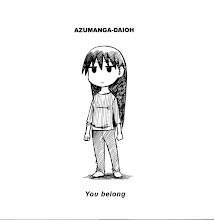Re-Kan! (レーカン!) is a 13 episode supernatural comedy based on the yonkoma manga of the same name by Seta Hinako. The anime originally aired in Japan during the Spring of 2015.
Amami Hibiki has been able to interact with the dead since she was little. Her mother had the power before her, but she died after Hibiki was born. Unfortunately her peers have never been appreciative of this gift and her childhood has been lonely when it comes to interacting with the living. Her father keeps that in mind and tries his best to help her, moving from time to time when her secret comes out. Sadly the most recent move seems to have been in vein as her secret becomes common knowledge almost immediately after starting the year at her new school. Things may not be as bad for her though as a handful of her classmates welcome her unique talents and start to befriend her. Only partially believing in her power they become involved in Hibiki's efforts to appease the local spirits and to help some of them pass on from the living world. At the same time the friends try to learn more about the kind and selfless girl who always seems sad. They try the best they can to convince her that she has friends among the living as well.
While at first skeptical this series did start to grow on me. Initially what turned me off were the character designs, particularly the 'brightness' of the hair. But the series and its episodic plot lines were enjoyable and entertaining. There are some funny parts, some touching parts and a lot of stealthy attacks on misogynistic tropes in anime. The pervert cat became a favorite target of distaste to both of my children and they would threaten violence on it at every appearance. The over all story ends with episode 12 and episode 13 is more like a bonus story that has the series checking off all of the typical slice of life tropes it had missed in the other episodes. Over all not bad, there have been better, but at only 13 episodes its not a waste of time for something mindless and enjoyable.
The series was simulcast on Crunchyroll. Sentai Filmworks has picked up the license and will be releasing it on disc in the future. No one has licensed the manga currently.
Amami Hibiki has been able to interact with the dead since she was little. Her mother had the power before her, but she died after Hibiki was born. Unfortunately her peers have never been appreciative of this gift and her childhood has been lonely when it comes to interacting with the living. Her father keeps that in mind and tries his best to help her, moving from time to time when her secret comes out. Sadly the most recent move seems to have been in vein as her secret becomes common knowledge almost immediately after starting the year at her new school. Things may not be as bad for her though as a handful of her classmates welcome her unique talents and start to befriend her. Only partially believing in her power they become involved in Hibiki's efforts to appease the local spirits and to help some of them pass on from the living world. At the same time the friends try to learn more about the kind and selfless girl who always seems sad. They try the best they can to convince her that she has friends among the living as well.
While at first skeptical this series did start to grow on me. Initially what turned me off were the character designs, particularly the 'brightness' of the hair. But the series and its episodic plot lines were enjoyable and entertaining. There are some funny parts, some touching parts and a lot of stealthy attacks on misogynistic tropes in anime. The pervert cat became a favorite target of distaste to both of my children and they would threaten violence on it at every appearance. The over all story ends with episode 12 and episode 13 is more like a bonus story that has the series checking off all of the typical slice of life tropes it had missed in the other episodes. Over all not bad, there have been better, but at only 13 episodes its not a waste of time for something mindless and enjoyable.
The series was simulcast on Crunchyroll. Sentai Filmworks has picked up the license and will be releasing it on disc in the future. No one has licensed the manga currently.



















































